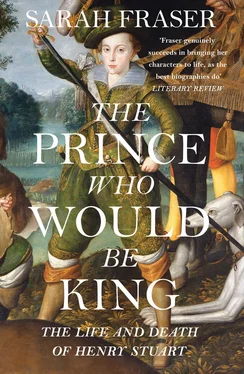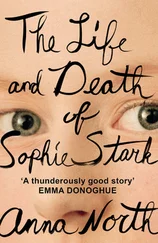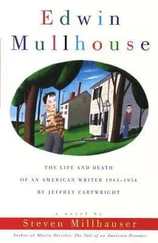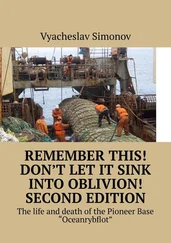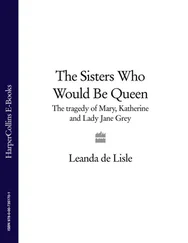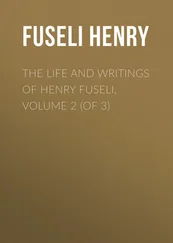William Collins
An imprint of HarperCollins Publishers
1 London Bridge Street
London SE1 9GF
WilliamCollinsBooks.com
This eBook first published in Great Britain by William Collins in 2017
Copyright © Sarah Fraser 2017
Cover image shows detail from Henry, Prince of Wales with Robert Devereux, 3rd Earl of Essex in the Hunting Field c . 1605 by Robert Peake (active 1580–1635) Royal Collection Trust/© Her Majesty Queen Elizabeth II 2017
Sarah Fraser asserts the moral right to be identified as the author of this work
Maps by Martin Brown
A catalogue record for this book is available from the British Library
All rights reserved under International and Pan-American Copyright Conventions. By payment of the required fees, you have been granted the non-exclusive, non-transferable right to access and read the text of this e-book on-screen. No part of this text may be reproduced, transmitted, down-loaded, decompiled, reverse engineered, or stored in or introduced into any information storage and retrieval system, in any form or by any means, whether electronic or mechanical, now known or hereinafter invented, without the express written permission of HarperCollins.
Source ISBN: 9780007548101
Ebook Edition © May 2017 ISBN: 9780007548095
Version: 2018-02-13
For my sons, Sandy and Calum
Cover
Title Page
Copyright
Dedication
House of Stuart Family Tree
Maps
Conventions and Style
Preface: Effigy
PART ONE: SCOTLAND, 1954–1603
1 Birth, Parents, Crisis: ‘A son of goodly hability and expectation’
2 Launching a European Prince
3 The Fight for Henry: ‘Two mighty factions’
4 Nursery to Schoolroom: ‘The King’s Gift’
5 Tutors and Mentors: ‘Study to rule’
PART TWO: ENGLAND, 1604–10
6 The Stuarts Inaugurate the New Age
7 A Home for Henry and Elizabeth: Oatlands
8 The Stuarts Enter London: ‘We are all players’
9 Henry’s Anglo-Scottish Family: Nonsuch
10 Henry’s Day: ‘The education of a Christian prince’
11 Union and Disunion: ‘Blow you Scotch beggars back to your native mountains’
12 Europe Assesses Henry: ‘A prince who promises very much’
13 The Collegiate Court of St James’s
14 Money and Empire: ‘O brave new world’
15 Friends as Tourists and Spies: ‘Traveller for the English wits’
16 Henry’s Political Philosophy: ‘Most powerful is he who has himself in his own power’
17 Favourites: ‘The moths and mice of court’
18 Henry’s Supper Tables: Lumley’s library and tavern wits
19 Henry’s Foreign Policy: ‘Talk for peace, prepare for war’
20 Heir of Virginia: ‘There is a world elsewhere’
PART THREE: PRINCE OF WALES, 1610–12
21 Epiphany: ‘To fight their Saviour’s battles’
22 Prince of Wales: ‘Every man rejoicing and praising God’
23 Henry’s Men Go to War: Jülich-Cleves
24 Henry Plays the King’s Part: King of the Underworld
25 From Courtly College to Royal Court
26 Court Cormorants: Henry and the king’s coterie
27 The Humour of Henry’s Court: Coryate’s Crudities
28 Marital Diplomacy: ‘Two religions should never lie in his bed’
29 Supreme Protector: The Northwest Passage Company
30 Selling Henry to the Highest Bidder: ‘The god of money has stolen Love’s ensigns’
31 A Model Army: ‘His fame shall strike the Starres’
32 End of an Era: ‘My audit is made’
33 Wedding Parties: ‘Let British strength be added to the German’
34 Henry Loses Time: ‘I would say somewhat, but I cannot utter it!’
35 Unravelling: After 6 November 1612
36 Endgame
Notes
Bibliography
Acknowledgements
Picture Section
Illustration Credits
Index
By the Same Author
About the Author
About the Publisher
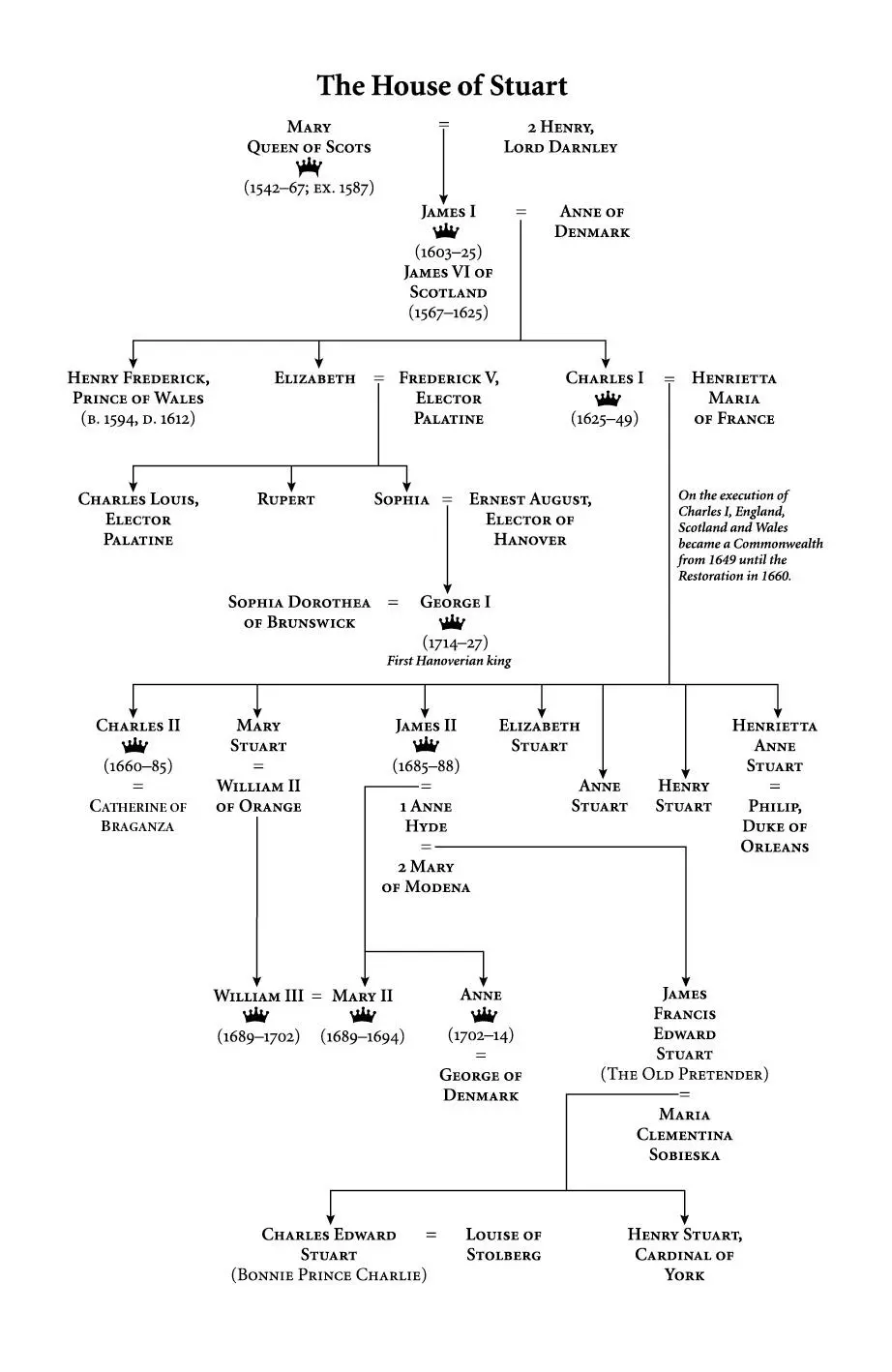
Spelling and punctuation, unstable in this period, are modernised to assist comprehension, and to prevent interruption of the narrative by lexical curiosities that might catch the eye and distract from the narrative flow. Even James VI and I revised his Basilikon Doron for publication to ease readability.
Contractions are expanded (thus mistie becomes Majesty). The spelling of proper names has been standardised. For example, Henry also spelled his name ‘Henrie’, but I have opted here for Henry. Individuals born with several titles, or those who changed name on receipt of them, can be a particular problem for the biographer writing for a non-specialist audience. Cecil was not the monolith ‘Salisbury’ when James VI negotiated in treasonable secrecy with Secretary Robert Cecil to inherit Elizabeth’s thrones. I note in media res when an important change has taken place and from then on, I use the new name. With regard to place names, ‘Great Britain’ as a term for the multiple Stuart territories is a bit of an anachronism, but I use it as it is so apposite. Place names are modernised and standardised (thus Finchingbrooke becomes Hinchingbrooke).
For dates, the year begins on 1 January not 25 March (as it did on this side of the Channel).
British currency was in pounds, shillings and pence: £ s . d . One English pound was worth £12 Scots. To understand what a particular amount would represent today you can add two zeros to the figure, to get a rough approximation.
PREFACE
‘How much music you can still make with what remains’
– ITZHAK PERLMAN
In the conservation room at Westminster Abbey lies the wreck of a life-sized wooden manikin, stretched out on a white table. This is what remains of Henry Frederick Stuart, Prince of Wales.
Recalling a cast of the nameless dead at Pompeii, the figure’s mute appeal touched me. Its ruined state tells of Henry’s importance, but also what happened to his legacy. After Henry died, visitors ransacked this likeness for relics – someone even stole his head. His effigy was unique in 1612. Up until then, they were made to honour monarchs and their consorts, not their offspring.
Who was Henry Stuart, to earn this effigy, and the state funeral that went with it – itself unprecedented in England, in scale and magnificence?
This book sets out to recreate Henry, an important but almost forgotten piece of history’s puzzle. Restoring Henry in his time and place reveals paths running through his court, from Elizabeth I to the Civil War, to a Puritan republic, and the British Empire in America; but also, to the transformation of the navy into a force achieving global domination of the high seas, and the breaking down and recreation of Britain’s armed forces into a world-class fighting machine.
Henry re-founded the Royal Library, amassing the biggest private collection in England. He began to create a royal art collection of European breadth – paintings, coins, jewellery and gem stones, sculpture, both new and antique, on a scale no royal had attempted before. These went on to become world-class collections under his brother, Charles I, and form the backbone of the British Library and the Queen’s Royal Collection today. Henry began the grandest renovations of royal palaces in his father King James VI and I’s reign, and mounted operatic, highly politicised masques. His court maintained a dozen artists, musicians, writers and composers. Ben Jonson, Michael Drayton, George Chapman and Inigo Jones all created work for him. He responded with enthusiasm to the vogue for scientific research, putting time, money and men into buying state-of-the-art scientific instruments – telescopes and automata that tried to model the heavens. He financed ‘projects’ – business schemes – to try and extract silver from lead, and make furnaces more fuel efficient.
Читать дальше
